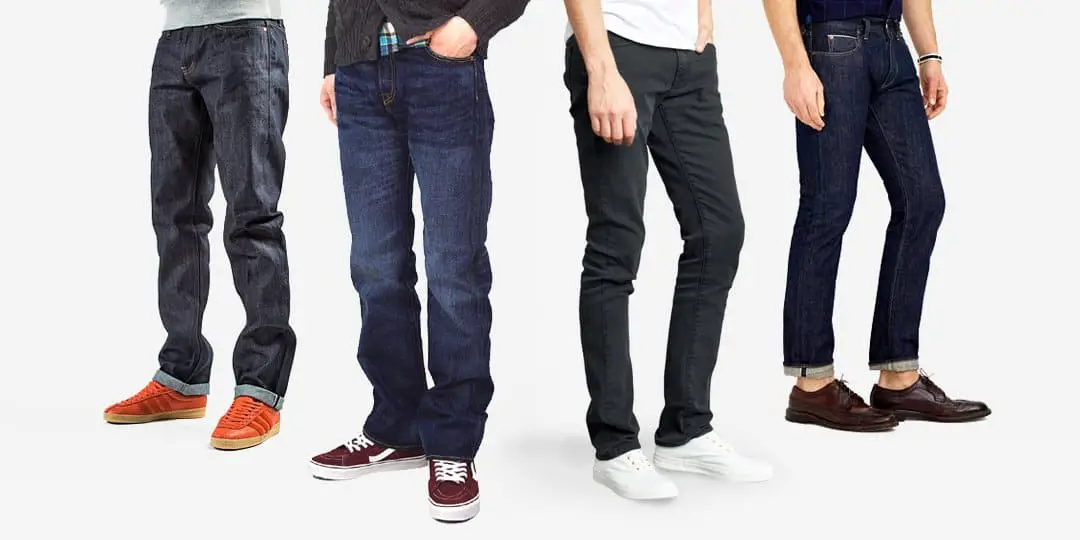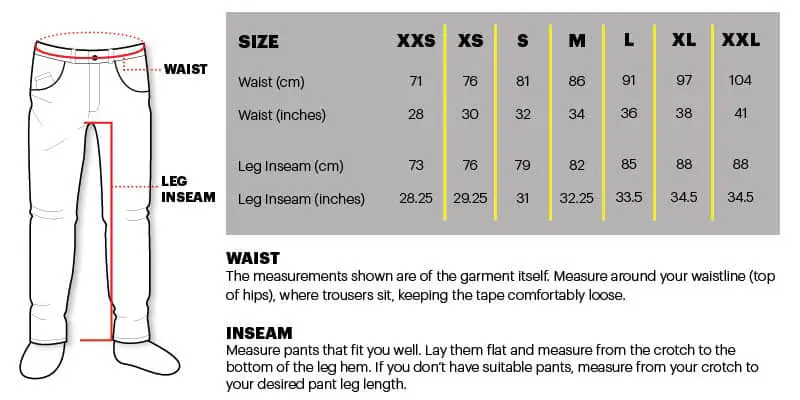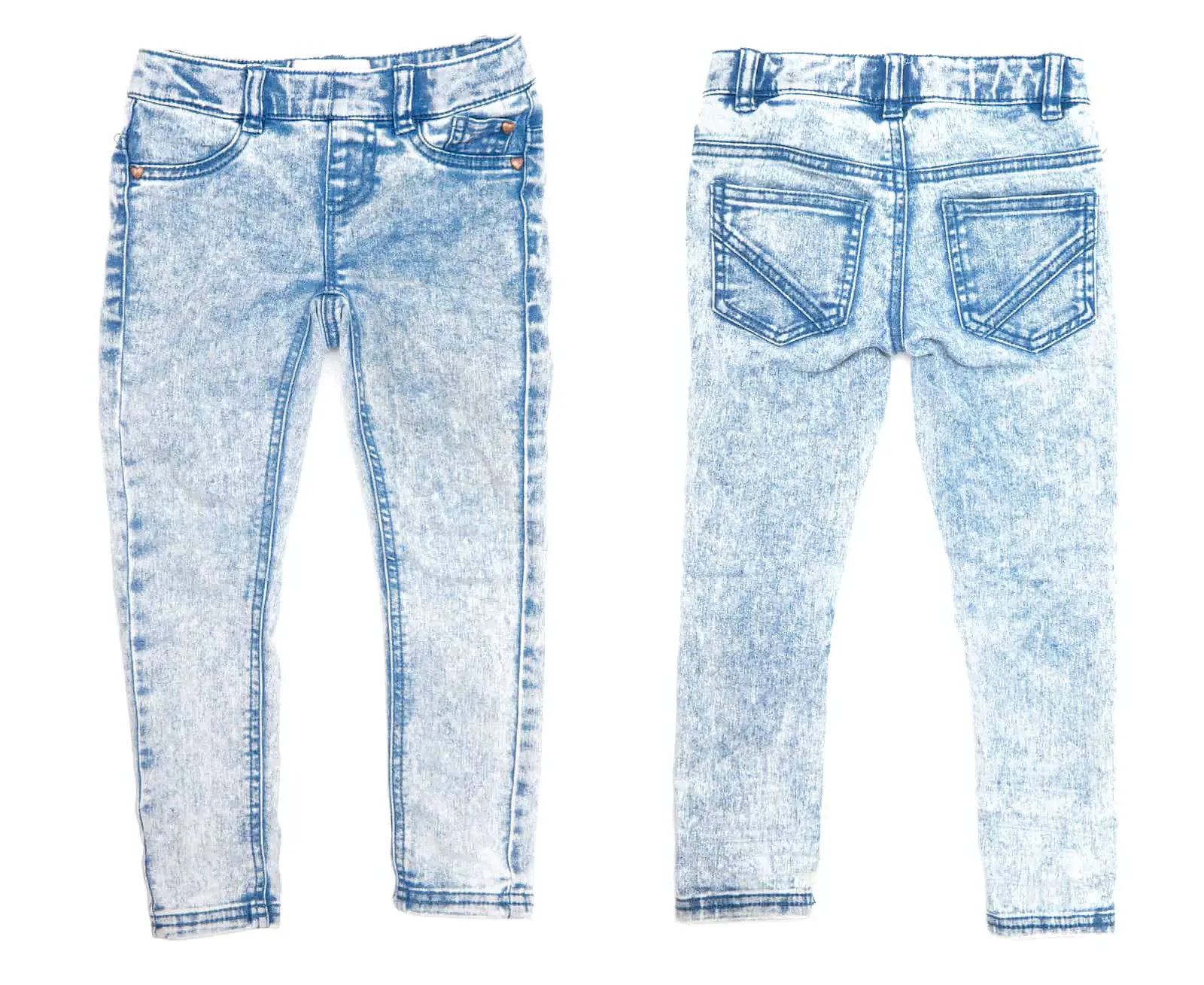Table of Contents
While women have a slew of jean options to choose from, men have a much more limited pot. The advantage to this is that jeans have now become a stylish and acceptable option to wear in any environment, whether it’s to the office or a classy night out.
*This post may contain affiliate links. As an Amazon Associate we earn from qualifying purchases.
Jeans are the one piece of clothing that gets the most wear in any man’s closet. Whether tapered, slim, straight, skinny, or boot cut.
From the affordable and dependable Old Navy jeans to the trendy slim tapered jeans, having a few good pairs of jeans on hand that fit well.
So which fit is right for you?
And what do all the different terms mean?
Below is a guide that will get you beyond the joggers and sweatpants and help you choose the jeans that work for you and your lifestyle. And, yes, we’ll explain what all the lingo means and suggest the pairings that work well with the styles that fit you best.
Understanding Jean Styles and Fits

There is a difference between fit and style. The fit describes how the jeans will fit your backside and thighs. The style, or “cut”, however, describes how it fits around your legs and ankles.
1. Tapered/Boot-Cut/Straight Cuts
Men’s tapered jeans are considered a type of slim fit jeans that a cut to be roomier on top and gradually hug the angles to provide more space. It has a similar clean cut and fit as a slim fit but is more relaxed. The tapered look works best for those who have thicker thighs but want to avoid the straight cut. This stylish cut is versatile can work with many styles. A classic is high-top Converse, bomber jacker and, white shirt.
The Boot-Cut, as the name implies, is meant to be worn over boots and has a straight cut and then flares a tad bit at the ankles to allow for boots. These are great for work or for a more casual look.
A straight cut is the classic cut for jeans running the same width from top to bottom. No fuss. Though the least popular cut these days, these jeans look best on those on the heavier side and paired with a slimmer fit shirt to create contrast. Having a tailor take up the hem or wearing it cuffed will help prevent footwear overwhelm.
2. Relaxed/Regular/Slim Fits
Relaxed fit jeans are different then relaxed cut jeans because they describe adding extra fabric to the back and widening the legs a bit more than the legs of the cut you chose. This fit works best for those who have a broader, more athletic body and thinner upper body. Think football player.
A regular fit is the fit that most fit men wear and graze the back a bit while leaving some room in the front. This is the fit that works best for most unless you have extra in the back and thighs department.
Slim fits are best if you want a skinny pants look but still favor circulation in your legs. They fit snuggly on the back and thighs and loosen up toward the calves and ankles. If you want the skinny or super skinny cuts, these cuts work best if you are confident with your figure or have the figure of a willow tree. You might get an aneurysm, but that’s your prerogative.
Understanding Jean Measurements

Now comes the easier part, at least relatively. Most jeans are sized using two measurements – waist and inseam.
The waist measurement is the measure in inches of the waistband part of your pants. Assuming you want your pants to sit on your hips, the easiest way to take this measurement is to use a tape measure and wrap it around the part of your waist where the waistband part of your pants usually sits.
The second measurement is the inseam, the measurement between the crotch of the pants, the part where all four seams come together, down to the cuff of your pants. Use a tape measure to get this measurement.
Together these two numbers combine to give you the measurements that show on the tags of most commercially made pants. IF you’re getting your pants custom designed, your tailor will need more measurements, but they can usually help you take them.
A third less common measurement which won’t usually be listed on the tags is the measurement of the rise of the pants. This is the measurement between the crotch area (X marks the spot) and to wear the button sits at the center of the waistband.
Finding your perfect pair of jeans is more common sense and knowing the terminology that describes what fits your body the best. If you know the general shape of your body you can use this guide to choose your new favorite pair of jeans.

